Introduction
The train, a witness to Vietnamese history, winds its way through the country like a thread connecting the past to the present. From the French colonial era to the present day, this mode of transportation has played a crucial role in the development and unification of the Land of the Two Deltas. Today, boarding a Vietnamese train is much more than just a geographical journey: it is a true immersion into the soul of the country.
This initiatory journey will take you from north to south, crossing breathtaking landscapes, cities steeped in history, and villages preserving centuries-old traditions. At each stop, a new page of Vietnamese history and culture is revealed, offering the traveler an experience as enriching as it is unforgettable.

Ga Ha Noi, Hanoi's train station - Source : Mr Linh's adventures Customer
Chapter 1: Hanoi, cradle of the nation
Our journey begins in Hanoi, the millennial capital of Vietnam. Hanoi Station, built in 1902 by the French under the name Hang Co Station, has witnessed many historical events, including the Vietnam War. The main building, damaged during the war, was rebuilt in a modern style while retaining its historic side wings.
Good to know: Trains to Lao Cai (for Sapa) depart from a separate building behind the main station.
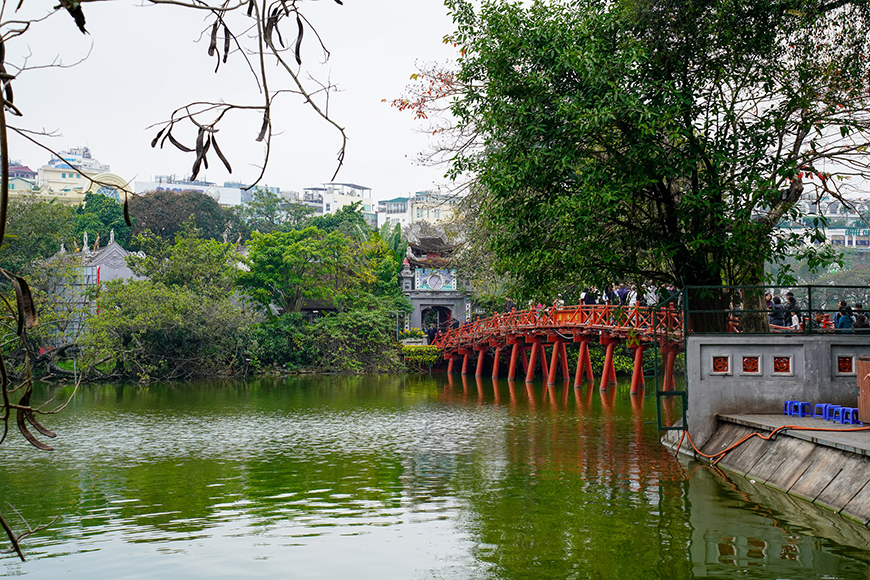
Hanoi, Hoan Kiem lake - Source : Mr Linh's adventures Customer
While waiting for departure, take the opportunity to explore the Old Quarter. Its 36 trading streets, each dedicated to a specific craft, immerse you in a maze of lively alleys where history is palpable at every corner. Don't miss stopping by Hoan Kiem Lake, the beating heart of the city. According to legend, it is here that an emperor returned a magical sword to a giant turtle, giving the lake its name ("Lake of the Returned Sword").
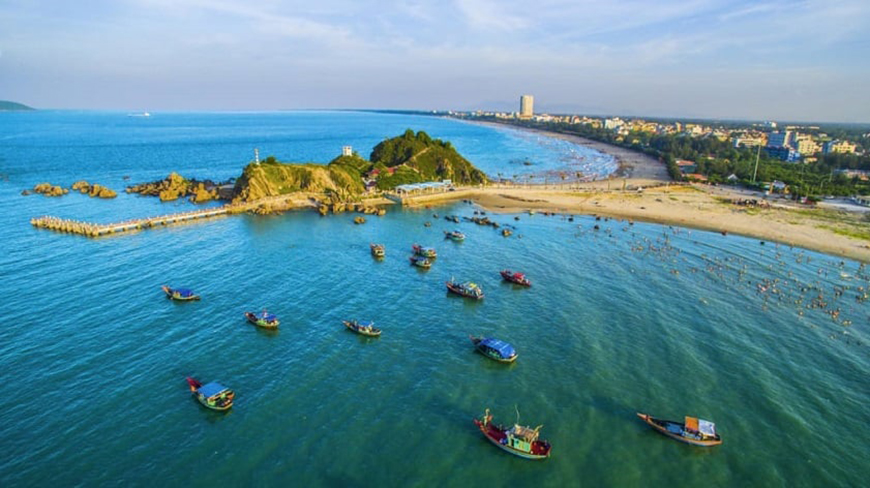
Cua Lo Beach - Source : Internet
Chapter 2: From Hanoi to Vinh, the Northern Plains
After leaving Hanoi, the train heads south, crossing the vast plains of the Red River Delta. The rice fields stretch as far as the eye can see, punctuated here and there by traditional villages and ancient temples.
Our first major stop is Vinh, the capital of Nghe An province. This city, although less known to tourists, has significant historical importance. It is the birthplace of Ho Chi Minh, the father of Vietnamese independence.
In Vinh, be sure to visit Ho Chi Minh's birthplace in the village of Kim Lien, about 14 km from the city. This site, transformed into a museum, offers a fascinating glimpse into the life of young Ho Chi Minh and the history of the Vietnamese revolution.
The region around Vinh is also known for its beautiful beaches, such as Cua Lo, and its national parks, like Pu Mat National Park, which harbors exceptional biodiversity.
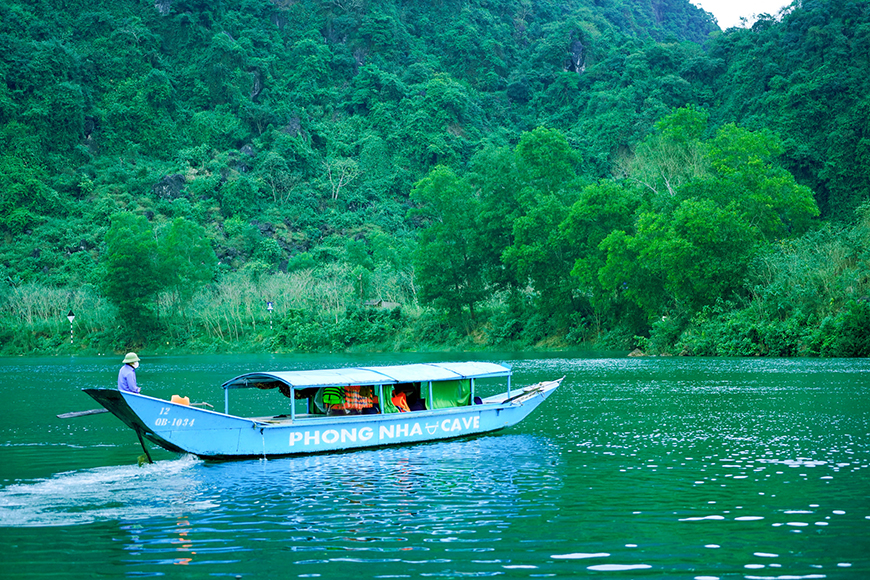
Phong Nha-Ke Bang - Source : Mr Linh's adventures Customer
Chapter 3: Dong Hoi and the Quang Binh Caves
The train continues its
journey southward and stops in Dong Hoi, the gateway to Quang Binh province. This region is famous for its spectacular karst landscapes and immense caves, some of which have been recently discovered.
Although the train does not stop directly in Dong Hoi, this is where you can organize a trip to
Phong Nha-Ke Bang National Park, a
UNESCO World Heritage Site. This park is home to some of the world's largest caves, including Son Doong, considered the largest known cave to date.
Dong Hoi city itself is worth a visit. Its beautiful beaches, like Nhat Le, offer a welcome moment of relaxation after the train journey. The remains of the ancient citadel gates testify to the region's tumultuous history, particularly during the Vietnam War.
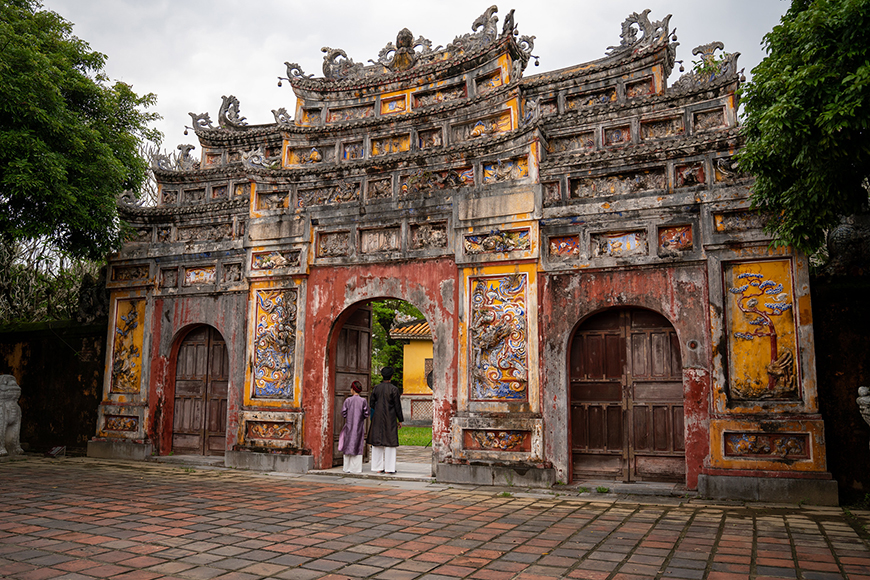
Hue, the Imperial City - Source : Mr Linh's adventures
Chapter 4: Hue, the citadel of emperors
The train continues its journey to Hue, the former imperial capital. At the heart of the city stands the Imperial City, a majestic relic of the Nguyen dynasty. Although partially destroyed during the Vietnam War, it retains a mystical aura and timeless beauty.
In the vicinity of the city, the tombs of the Nguyen emperors are true architectural gems. Each tomb reflects the personality of the sovereign it houses, harmoniously blending architecture, sculpture, and landscaping.
Overlooking the romantic Perfume River, do not miss the Thien Mu Pagoda, a symbol of Hue. Besides its architectural beauty, it is famous for having been the home of Buddhist resistance during the Vietnam War.
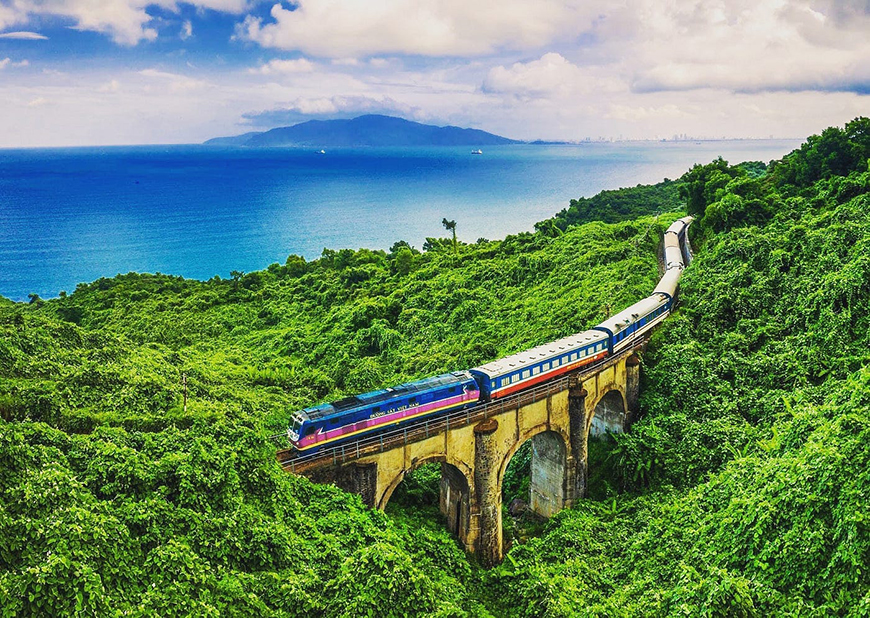
Ha Van Pass and its spectacular panorama - Source : Internet
Chapter 5: Hai Van Pass, a natural border
After leaving Hue, the train traverses one of the most spectacular sections of its journey: the Hai Van Pass. Although the train does not stop here, this passage offers breathtaking views of the South China Sea on one side and lush mountains on the other.
According to legend, a dragon lives in these mountains, protecting the country from invasions from the north. This myth perfectly illustrates the long-standing role of this pass as a natural border between northern and southern Vietnam.
Here, the attentive traveler will notice subtle changes in landscapes, climate, and even culture between the north and south of the country.
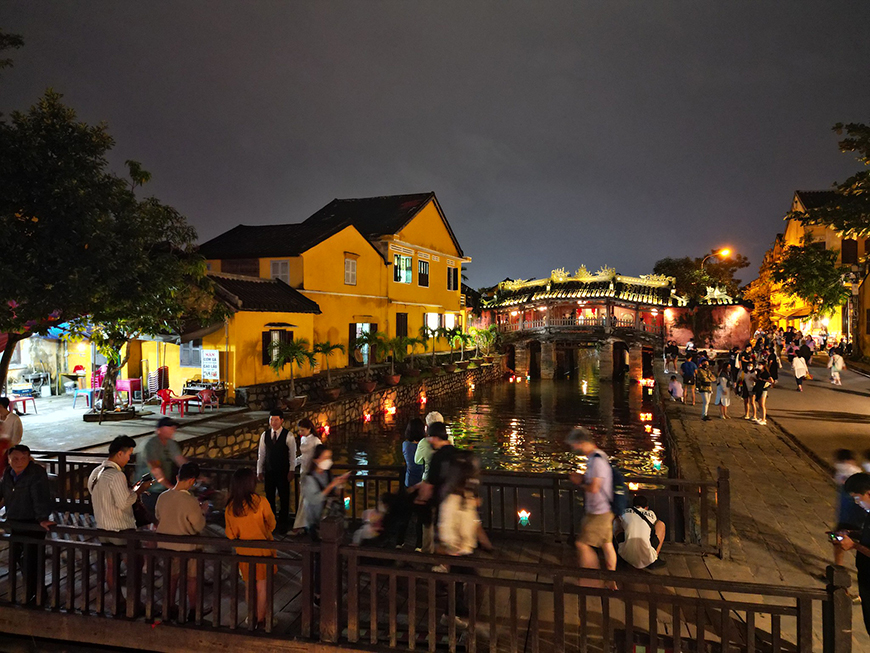
Romantic Hoi An - Source : Mr Linh's adventures
Chapter 6: Da Nang and Hoi An, a blend of cultures
The train makes a stop in
Da Nang, a dynamic city on the rise. Take the opportunity to visit the Cham Museum, which houses an impressive collection of sculptures from the ancient Champa kingdom.
A few kilometers away,
Hoi An immerses you in another era. This ancient port city, listed as a UNESCO World Heritage Site, is famous for its colorful lanterns that light up its streets at night. Stroll through its cobbled streets, admire its old houses, and Chinese temples, which bear witness to the influence of foreign merchants who have shaped the unique identity of this city.

The Mekong Delta - Source : Mr Linh's adventures Team
Chapter 7: The Mekong Delta, Vietnam's granary
The train continues its journey south, crossing the Mekong Delta, the rice bowl of Vietnam. Life here is shaped by the river and its countless branches. The floating markets of Cai Rang or Cai Be offer a colorful spectacle, where fruits, vegetables, and local products are exchanged from boat to boat.
In the surrounding villages, discover ancestral skills: making rice paper, weaving mats, making coconut candies... Each visit is a dive into the authenticity of Vietnamese rural life.
The local cuisine deserves attention: exotic fruits, freshwater fish, fragrant soups... Every bite is an explosion of flavors typical of southern Vietnam.
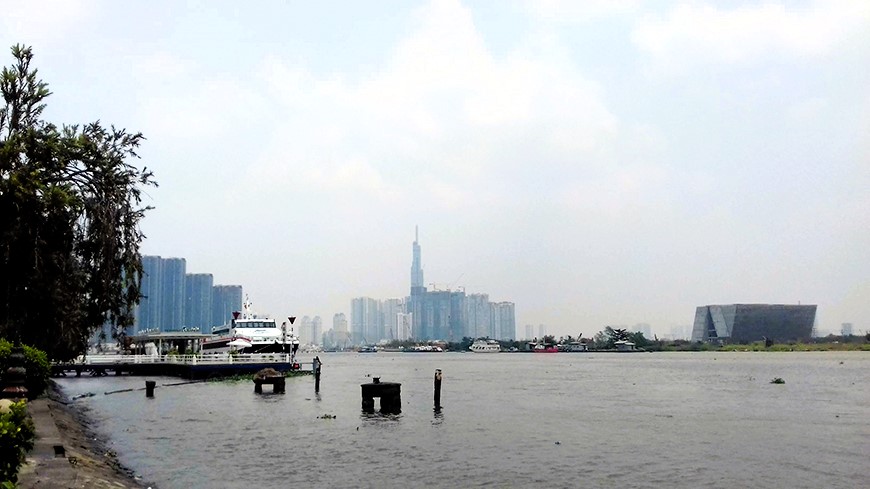
Ho Chi Minh City - Source : Mr Linh's adventures Team
Chapter 8: Ho Chi Minh City, the Pearl of the South
The journey ends in Ho Chi Minh City, formerly Saigon, a bustling metropolis that never sleeps. Here, modern skyscrapers stand alongside colonial buildings, while motorcycles navigate through the intense traffic.
To understand the country's recent history, visit the
Cu Chi tunnels, an underground network used by the Viet Cong during the Vietnam War. The War Remnants Museum offers a poignant glimpse into the consequences of the conflict.
Conclusion
This train journey through Vietnam is more than just a trip: it's an odyssey through the history, culture, and landscapes of a fascinating country. From the rice fields in the north to the floating markets in the south, from imperial cities to modern metropolises, each stage of this journey offers its share of discoveries and emotions.
Vietnam, with its cultural richness, diverse landscapes, and the warmth of its people, will surely captivate you. This train journey is just a taste of the treasures this country holds. So, be tempted by the adventure and extend your stay to further explore this multifaceted land.
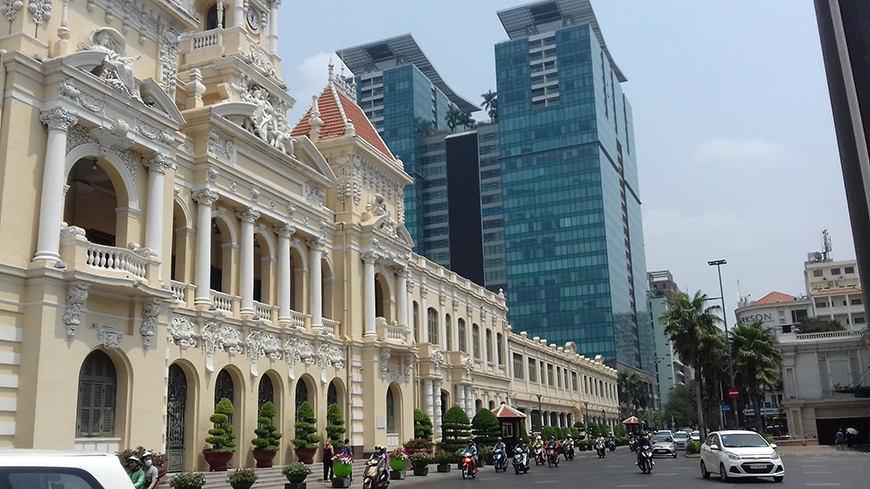
Saigon, when past meets present - Source : Mr Linh's adventures Team
Good to know
Vietnamese Trains
The Vietnamese railway network, over 2600 km long, connects Hanoi to Ho Chi Minh City. Trains, while not always the most modern, offer an authentic experience. There are several classes: hard seats to air-conditioned sleeper cabins. The night train is a popular option for long journeys.
Vietnamese Cuisine on Board
Menus vary depending on the class of travel (economy, business, first class) and may also depend on the journey's duration. Long journeys between Hanoi and Ho Chi Minh City generally offer a greater variety of food choices. Overall, the food served on Vietnamese trains reflects the local and traditional cuisine of the country.
You will find traditional Vietnamese dishes on board such as rice, noodles, fish, or meat. These dishes are served either in lunch boxes or on hot plates. In addition, roaming vendors also offer a variety of Vietnamese snacks such as sweet buns, banana chips, chicken sticks, fresh fruits, etc. For drinks, you can get tea, coffee, sodas, water, and sometimes local beer.
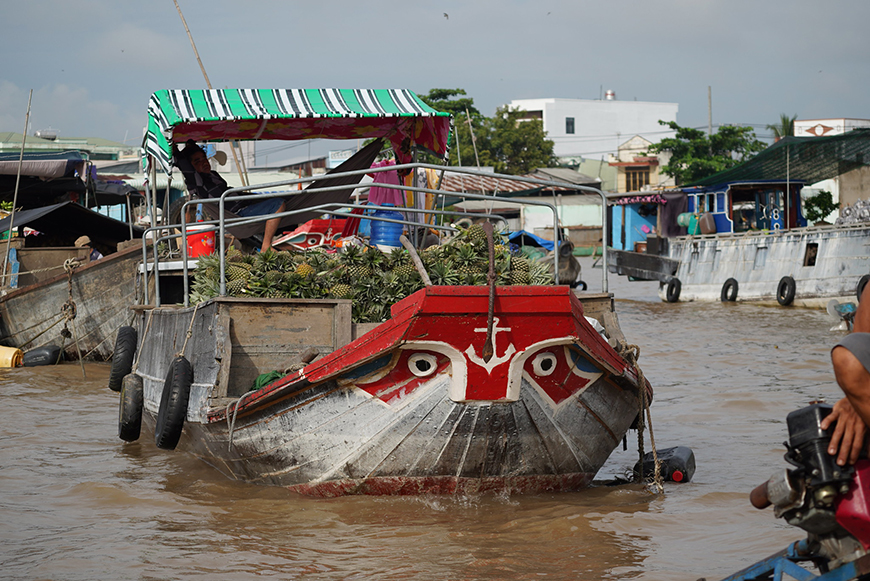
Cai Rang floating market - Source : Mr Linh's adventures
Basic Vietnamese Vocabulary
- Xin chao: Hello
- Cam on: Thank you
- Xin loi: Excuse me
- Bao nhieu tien?: How much does it cost?
- Ga: Station
This train journey promises you a total immersion in Vietnamese culture and history, offering a unique perspective on this fascinating country.